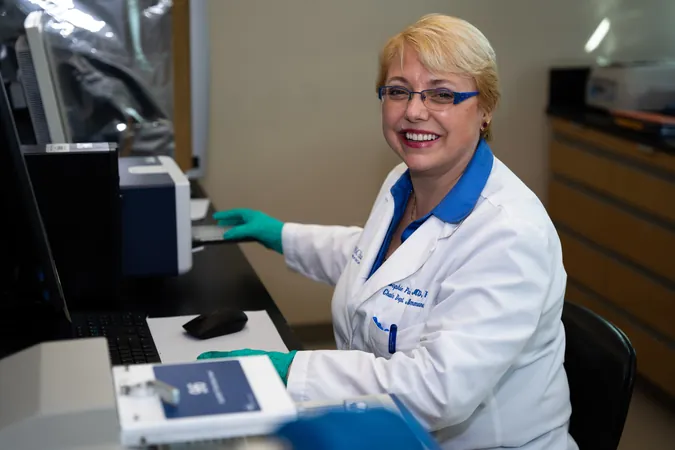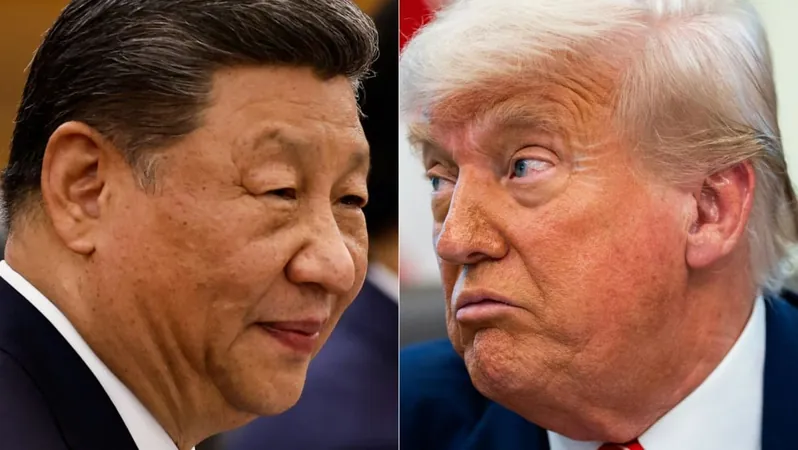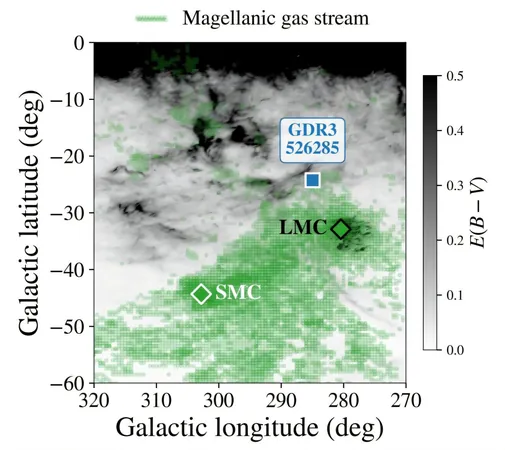
Revolutionary Breakthrough in Leukemia Treatment: Researchers Uncover a Hidden Cell Loop
2025-07-14
Author: Nur
A Game-Changer in the Fight Against Leukemia
In a groundbreaking study from the MUSC Hollings Cancer Center, researchers have unveiled a crucial signaling loop that contributes to the growth and survival of leukemia cells. Their innovative immunotherapy disrupts this loop, offering a promising new avenue for cancer treatment. This research, published in Nature Communications, is sparking hope in the fight against this relentless disease.
Dr. Sophie Paczesny: Champion for Change
Leading the charge is Dr. Sophie Paczesny, a dedicated pediatric hematologist-oncologist, who has devoted her career to combating one of the hardest-to-treat blood cancers: acute myeloid leukemia (AML). With her team of experts, she aims to alter the grim statistics of AML, a cancer that affects children and adults alike.
Understanding AML: The Silent Saboteur
AML is a fast-spreading and aggressive blood cancer that can be notoriously resistant to treatment. One of the culprits behind its high relapse rate is the leukemia stem cell, which can evade chemotherapy by hiding in the bone marrow. These stealthy cells emit signals that not only fuel the cancer’s growth but also suppress the immune system’s ability to fight back.
The Key Discovery: Breaking the Loop
In their study, researchers pinpointed a dangerous feedback loop involving the protein IL-33 and its receptor IL1RL1, which is abundantly expressed in AML cells. The vicious cycle created by this loop allows leukemia to thrive and evade treatment. "The more aggressive the leukemia, the more IL1RL1 we detected,” noted Dr. Paczesny. This insight was pivotal in devising a targeted approach.
Innovative Immunotherapy: A Dual-Action Approach
The breakthrough lies in a newly developed bispecific antibody that serves two critical functions. First, it blocks the IL-33/IL1RL1 signal, actively targeting and eliminating leukemia cells that express IL1RL1. Second, it activates T-cells, specifically CD8+ cells, to mount a robust immune response against the cancer.
Promising Results in Lab and Beyond
In experimental models, this dual-targeting strategy not only eradicated leukemia cells but also dismantled their protective microenvironment, aiding the body in its fight against cancer. Encouragingly, the treatment showed significant potential in slowing growth and reducing relapse rates, all while maintaining a favorable side-effect profile.
A New Hope for Cancer Treatment
By interrupting the signaling pathways relied upon by leukemia stem cells, this research opens the door to improved therapies for AML and potentially other cancers that share similar tumor characteristics. Dr. Paczesny highlights that IL1RL1 is found in various other cancers, including colorectal, lung, ovarian, and brain cancers, signaling a broader application for this innovative therapy.
The Future of Cancer Treatment: Safe, Effective, and Accessible
This new bispecific antibody represents a significant leap forward, addressing many limitations of current cancer treatments. Its low toxicity means it could be safer and more tolerable for patients, with the added benefits of being easier and cheaper to produce. Unlike toxic chemotherapies and complex CAR-T therapies, this treatment acts like an 'off-the-shelf' solution, aiming for quicker recovery times and enhanced quality of life.





 Brasil (PT)
Brasil (PT)
 Canada (EN)
Canada (EN)
 Chile (ES)
Chile (ES)
 Česko (CS)
Česko (CS)
 대한민국 (KO)
대한민국 (KO)
 España (ES)
España (ES)
 France (FR)
France (FR)
 Hong Kong (EN)
Hong Kong (EN)
 Italia (IT)
Italia (IT)
 日本 (JA)
日本 (JA)
 Magyarország (HU)
Magyarország (HU)
 Norge (NO)
Norge (NO)
 Polska (PL)
Polska (PL)
 Schweiz (DE)
Schweiz (DE)
 Singapore (EN)
Singapore (EN)
 Sverige (SV)
Sverige (SV)
 Suomi (FI)
Suomi (FI)
 Türkiye (TR)
Türkiye (TR)
 الإمارات العربية المتحدة (AR)
الإمارات العربية المتحدة (AR)